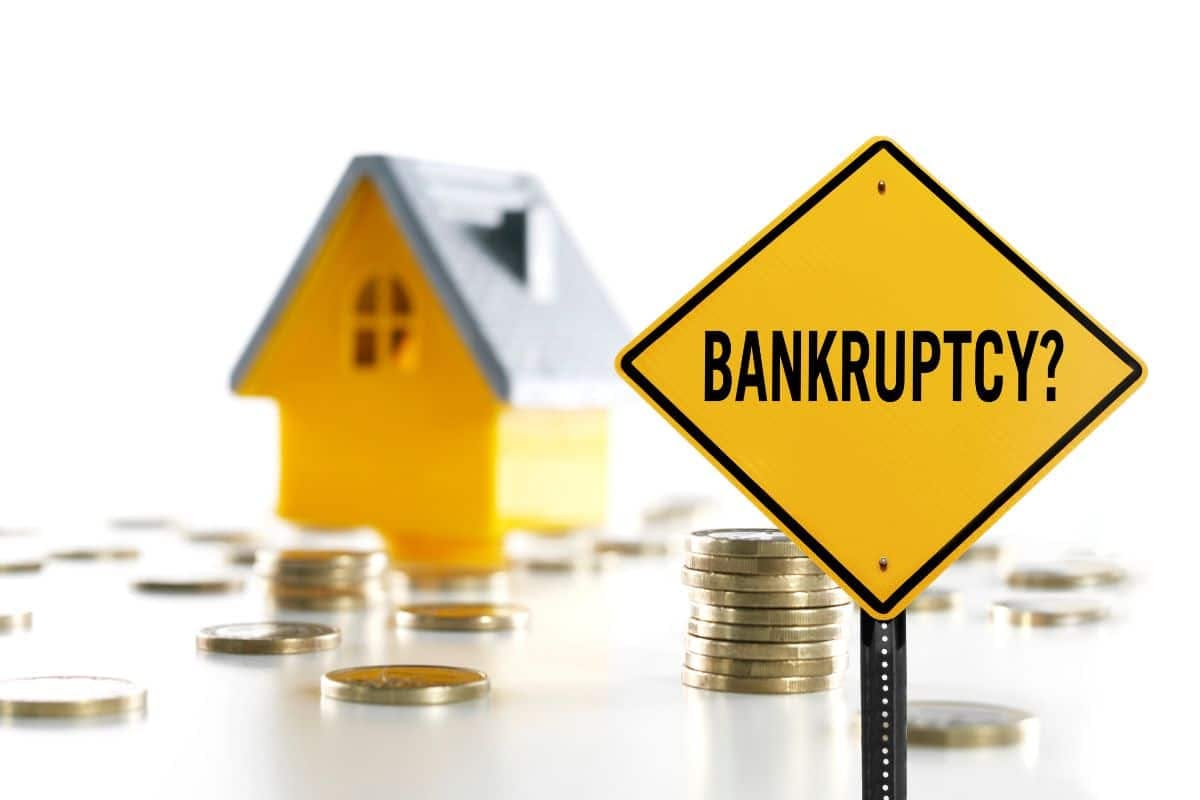How Long After Bankruptcy Can I Get a Mortgage in Canada?
By Arthur Dubois | Published on 15 Nov 2022

Filing for bankruptcy can give you a fresh start if you’re struggling financially. But it will negatively affect your credit score and make it difficult to get approved for a mortgage since you will be seen as a risky borrower by lenders. Fear not, getting a mortgage after bankruptcy can be done with the right timing and careful planning.
So, if you’re wondering how long after bankruptcy you will have to wait before you can apply for a mortgage and buy a house, this article will answer that question and more.
Can you get a mortgage after filing for bankruptcy in Canada?
A bankruptcy will stay on your credit report for 6-7 years, depending on your province, and make it harder for you to get approved for a mortgage or any other loan in Canada. But the good news is that it is possible to get approved for a mortgage even after filing for bankruptcy.
A bankruptcy will make you appear as a higher-risk borrower to lenders, and you will likely have to pay a higher interest rate if you are approved for a conventional mortgage. However, it will not automatically make you ineligible for financing your dream house. The important thing is to understand the waiting period and take steps to improve your chances of getting approved while waiting.
When can you get a conventional mortgage after bankruptcy?
You will need to wait at least 2 years after your bankruptcy discharge date before you will be eligible for either a conventional mortgage from a traditional lender or a CMHC-insured mortgage in Canada. For a CMHC mortgage, 2-years post-bankruptcy discharge is a requirement set by the government-backed Canada Mortgage and Housing Corporation (CMHC). For a conventional mortgage through a traditional lender, like one of Canada’s big banks, there isn’t a hard and fast rule, but 2 years is the industry standard.
There are some private lenders who may be willing to give you a mortgage sooner than that, as long as you can prove that you’ll be able to make the monthly payments. But these subprime mortgages come with lots of strings attached and are usually very expensive with double-digit interest rates. Also, be prepared to drop a larger down payment than the minimum of 5% required for a CMHC mortgage, or the 20% required for a conventional mortgage.
So while you can qualify for a mortgage sooner than two years after bankruptcy, it’s not always a good idea. You’ll likely pay a higher interest rate and will have to fork over a larger down payment. Unless you absolutely need to buy a home before the two-year mark, it may be better to wait until your credit score has recovered in order to get better terms.
What happens to your mortgage when you file for bankruptcy?
If you’re struggling to make your debt payments and you file for bankruptcy, the first thing you need to know is that your mortgage lender can still foreclose on your home. This is because bankruptcy only covers unsecured debts, like credit cards and personal loans. Mortgages are considered secured debts, which means they’re backed by collateral, in this case, your home.
That means you need to continue making your mortgage payments to stay in your home. If you miss the payments, your lender can begin the foreclosure process.
Can you keep your house after bankruptcy?
Filing for bankruptcy does not mean you’ll lose your home. This is the case where you have little to no equity in the house and your mortgage payments are reasonable. That is, there’ll be little cash left if the house is sold and the mortgage paid off.
On the other hand, if you have a large equity in the home, you will be required to sell it to release the equity and pay some of your debts with what is left after paying off the mortgage. In other cases, you may be required to refinance your home and use the equity to consolidate your debts.
The good news is that some provinces have bankruptcy exemptions on principal residences up to a limit. For example, up to $40,000 of the equity on a principal home is exempt from bankruptcy in Alberta. Your License Insolvency Trustee will work with you to explore the available options to help you keep your home if possible.
Tips for applying for a mortgage after bankruptcy
There are a few things you can do to improve your chances of getting approved for a mortgage after bankruptcy in Canada:
1. Work on rebuilding your credit score
This should be the first thing you do after your bankruptcy discharge. Getting a secured credit card or one of the best credit cards for rebuilding credit in Canada is a good starting point. Also, make all of your payments on time and can consider becoming an authorized user on someone else’s credit card if necessary.
2. Save a larger down payment
As mentioned above, you’ll likely need to provide a larger down payment if you want to get a mortgage sooner than two years after bankruptcy. And even if you decide to wait, a higher down payment may increase your chances of getting approved for the mortgage with better terms. So start saving!
3. Shop around for the right lender
Not all lenders have the same requirements when it comes to approving borrowers who have previously filed for bankruptcy. Some may be more lenient than others, so it’s important to shop around for a mortgage lender and compare your options.
4. Get a cosigner
If you can’t qualify for a mortgage on your own, you may be able to get approved if you have a mortgage cosigner who meets the lender’s requirements, like a spouse or partner. Just keep in mind that if you default on the loan, your cosigner will be on the hook for the balance.
5. Wait it out
Your best bet may be to wait at least 2 years after bankruptcy before applying for a mortgage. This will give you time to rebuild your credit score and save up for a larger down payment. And you’ll likely get better terms when you finally apply.
Final thoughts
If you are considering filing for bankruptcy in Canada, it is important to understand how it will affect your ability to get a mortgage.
While you may not be able to get a traditional mortgage until 2 years after you are discharged from bankruptcy, you can use the waiting period to improve your financial situation and show lenders that you are capable of repaying a mortgage. The tips mentioned above are a great starting point.
And if you are just considering filing for bankruptcy, it is important to speak with a Licensed Insolvency Trustee to explore your options and understand how it will affect your ability to get a mortgage in the future. It’s important to explore other debt-relief programs available before committing to a bankruptcy or consumer proposal.
